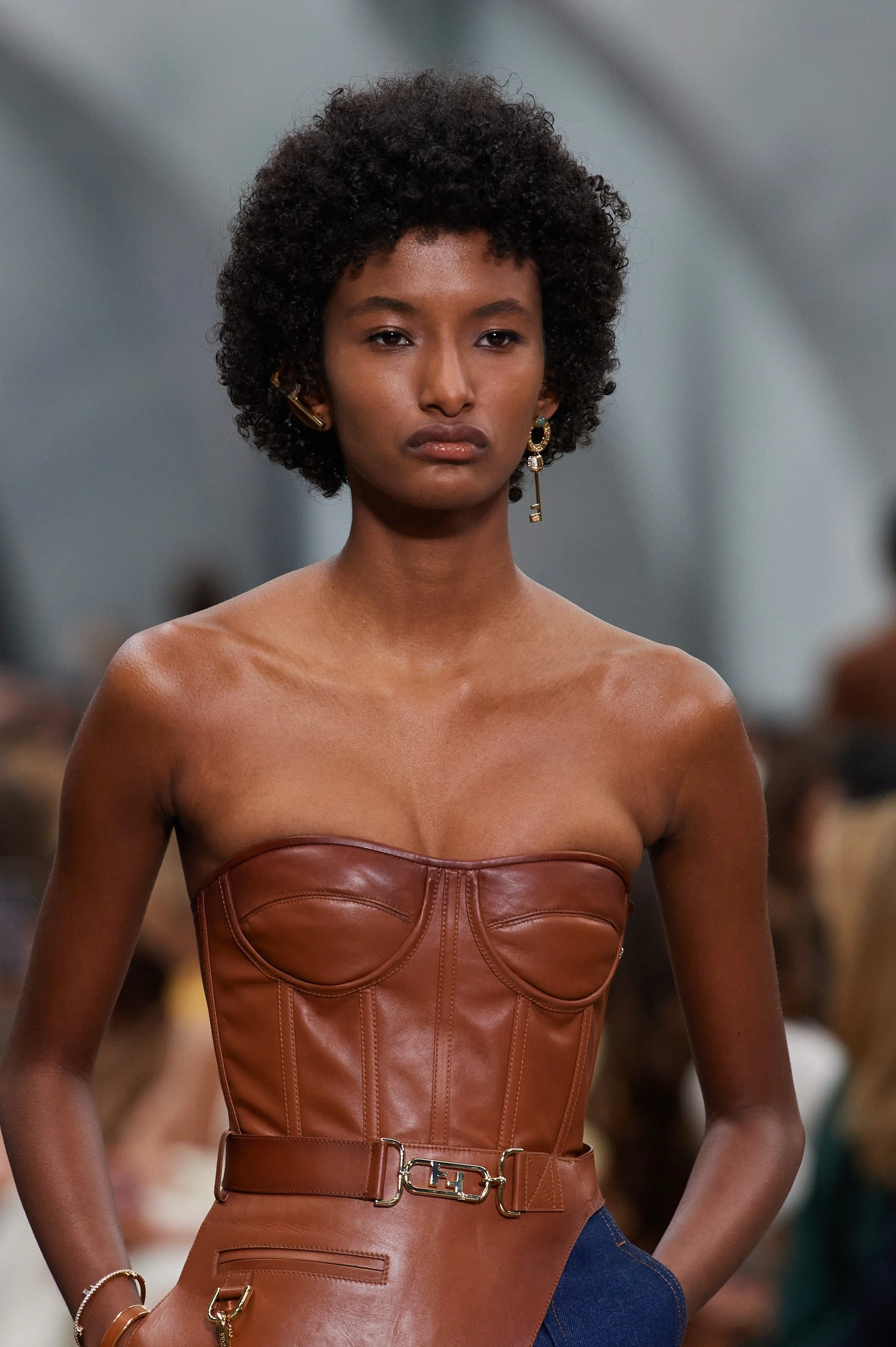All Tied Up
Fendi RTW Fall 2022
One only has to glance at the runway to see that corset tops are still en vogue. Fendi, Prada, Valentino….all exemplified this unique structure in their 2022 Fall RTW collections. However this trend isn’t exactly new news. As far back as August 2019, Laird Borrelli-Persson wrote about the trend for Vogue Runway. A year ago yours truly purchased an Alice + Olivia corset top (I like to pair it with jeans, neutral toned skirts, even my black faux-leather pants - also Alice + Olivia). So let’s say that in current terms the trend has been around ~3 years. But of course, the corset dates back much farther than that…
The first true corset was invented in the early 16th century, originally constructed out of whalebone, designed to straighten the torso and yes, push up the “bosom.” Catherine de Medici (1519-1589) is credited with bringing the fashion from Italy to France, when she wed the future King Henry II. If you’ve ever been to a Renaissance Fair, and see corsetry everywhere, it’s because typically the Fair is set in the mid-to-late 16th century, during the reign of King Henry VIII in England, by which time the fashion had arrived from the Continent to England. At that time it was common for corsets, or “stays” as they were also called, to be worn either as an undergarment or as outerwear. During her reign Queen Elizabeth I elevated the concept to even greater heights, as she elevated the art of performance dressing in general. Corsets fell out of fashion in the late 18th - early 19th century partly due to an anti-aristocratic sentiment following the French Revolution. If you’ve ever watched “Bridgerton,” or any Jane Austen adaptation, you’ll be familiar with the Regency style featuring what has become known as an “Empire waist.”
Corsets came back into vogue again in the mid-19th century, aka the “Victorian era,” when an hourglass silhouette became fashionable. It wasn’t until the early 20th century that a more relaxed silhouette, allowing freedom of movement, was made popular in large part by Chanel. During the war years, fabric and other materials were scarce, forcing a more minimalist approach to fashion until in 1947 Dior famously launched his “New Look.” Controversial at the time for the amount of fabric needed for the voluminous skirts, the return to the hourglass silhouette was a precursor to the more formalized cocktail attire that became popular in the mid-twentieth century. The 1960’s of course heralded an entirely different aesthetic, or rather variety of aesthetics, from the hippie movement in Haight Ashbury (which was itself an outgrowth of the earlier “Beatnik” movement championed by Jack Kerouac) to the “swinging sixties” styles popular in London.
So why now have corsets come back into vogue? I’m not entirely sure, but I have a hunch it has to do with a certain nostalgia for everything ‘90s / early aughts….as written by Clementina Jackson for the September 2022 issue of Elle, “This year's corset is more Euphoria than Bridgerton: bright colours, metallic finishes, edgy prints, worn as a top with low-slung trousers, mini skirts and cargo pants, or as part of a matching co-ord set. It's the perfect mix of high-school rebellion, cool-teen party dressing and that Nineties / Y2K style that's stubbornly sticking around.” A renewed interest in some of the most famous celebs from that time (Brittany Spears, Lindsey Lohan, even Paris Hilton) has also helped reinvigorate the style.
Personally, I’m here for it!
